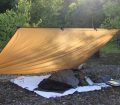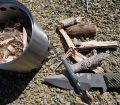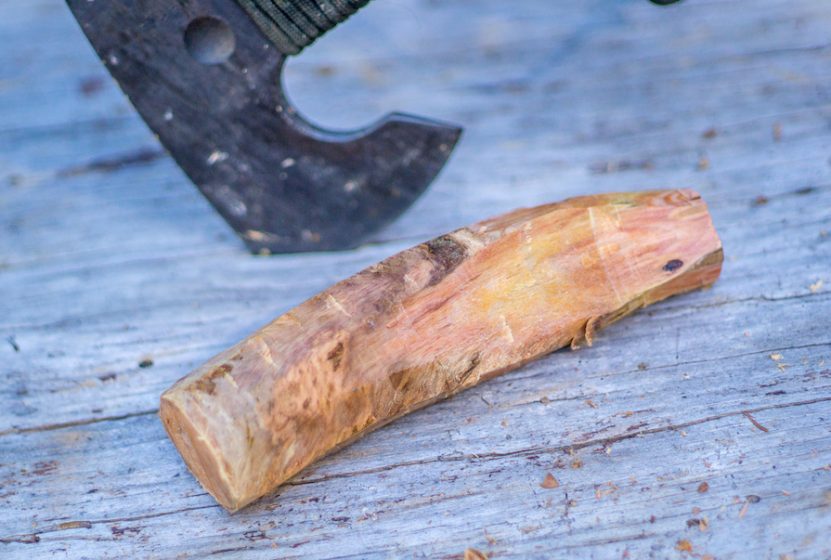In this article, we are going to discuss one of the oldest fire-starting sources that dates back into the 1500’s, perhaps even further. During its history fatwood was often used as a lamp or torch wick source due to its water-resistant properties. Also during this time period another use for fatwood was found when creating pine tar. Pine tar is the result when fatwood is heated and pressurized extracting the sticky substance that was used as a natural water repellent/sealant, making soap, a few medicinal uses, and in the sport of baseball.
What is fatwood, how is it created, and are there any benefits to keeping some stashed in your campfire kit?
Fatwood comes from the heartwood, knots, and roots of a coniferous tree species that include Cedars, Douglas-firs, cypresses, firs, junipers, kauris, larches, pines, hemlocks, redwoods, spruces, and yew trees. The most common type of coniferous tree found in North America that is likely to produce fatwood is the Pine tree.
As a coniferous tree species goes into a decomposing state a natural protection process begins. The tree’s sap starts as a viscous liquid, (containing terpene a component to make turpentine), then begins to thicken into a sticky resin as it travels into the heartwood, knots, and root system of the dying, cut, or fallen tree.
After this process is complete (about 2-3 years) the end result is fatwood. Benefits to keeping fatwood in your campfire kit are its water-resistant properties due to the resin within the wood, it can be harvested and stored for long periods of time, it will ignite even in damp conditions, and fatwood can ignite damp firewood due to its higher burning temperature.
Now that we know a little about what fatwood is, how it’s made, and a few benefits to keeping fatwood in your campfire kit, how do you locate and harvest it? If I am planning on visiting an area where Pine trees are present I’ll bring my fatwood hunting tool kit.
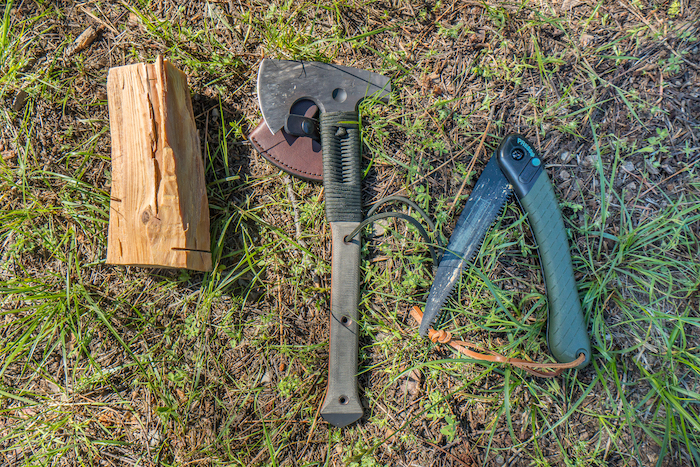
During my search, I am looking for downed pine trees, often identified by their light grey coloration and vertical wood grain that goes from the bottom to the top of the tree. Along the downed pine tree the most common locations of fatwood are within the knots, within the stump where the tree has been cut or fell during natural causes, and within the root system depending on the level of decay of the tree.
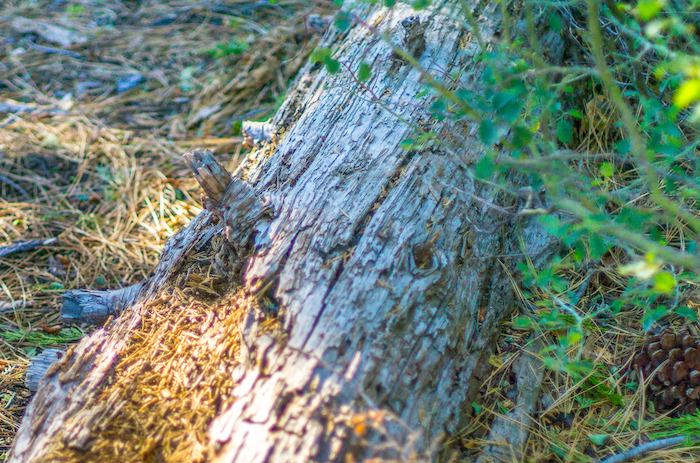
To test these areas for the presence of fatwood I will tap the area using either my axe or knife. What I’m listening for is a difference in tone of the wood as it’s tapped. The dead areas of the tree will produce a soft hollow type sound where the areas that the fatwood is present you will get a denser type knocking sound.
Once I have located an area that fatwood is most likely present, to confirm I will take either my axe or knife and begin to shave the sides of the broken branch closest to the trunk of the tree, close to where the tree has been cut/split, or around the exposed root system.
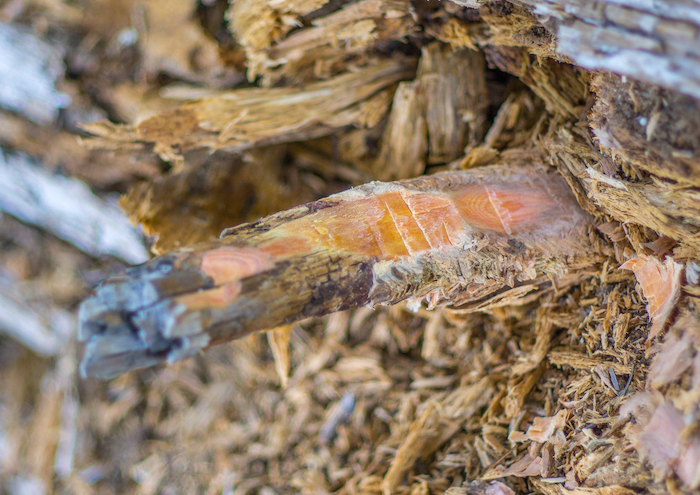
What I’m looking for beneath the thin skin layer of dead wood is fatwood that will be yellow and amber in color. Another way to confirm that you have struck fatwood is by the turpentine, or heavy pine, type of scent it will produce once shaved.
When I have confirmed fatwood is present I begin to clear the dead wood around the area to be harvested using my axe. Once the area of dead wood is cleared I will either harvest the complete piece of fatwood on site or use my hand saw remove larger pieces to be processed later. Now that the fatwood has been harvested the next step is to cut it into sticks using an axe, folding saw, and/or fixed blade knife.
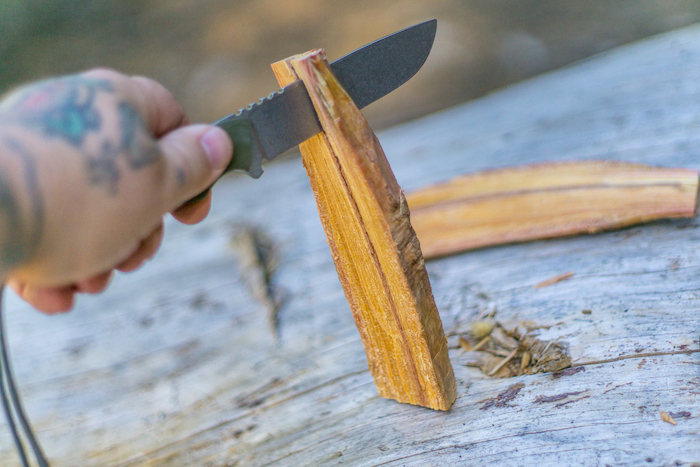
Here’s a short step by step how I process larger pieces of fatwood into sticks:
- Using a hand saw cut flat surfaces on either end of the pine knot or stump section.
- If cutting a larger section I will begin using my axe to divide the pine knot into about a 1” in diameter pieces.
- Take your fixed blade knife and divide the 1” diameter pieces into ½” sticks using the batoning method.
- Now the processed fatwood is ready for use.
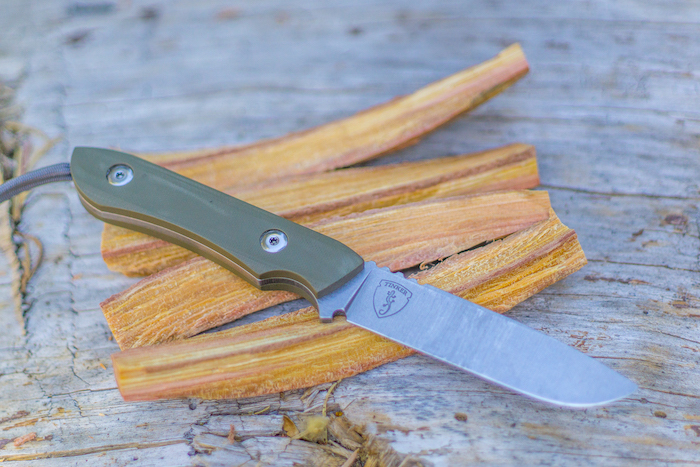
So how do you use fatwood to start a campfire?
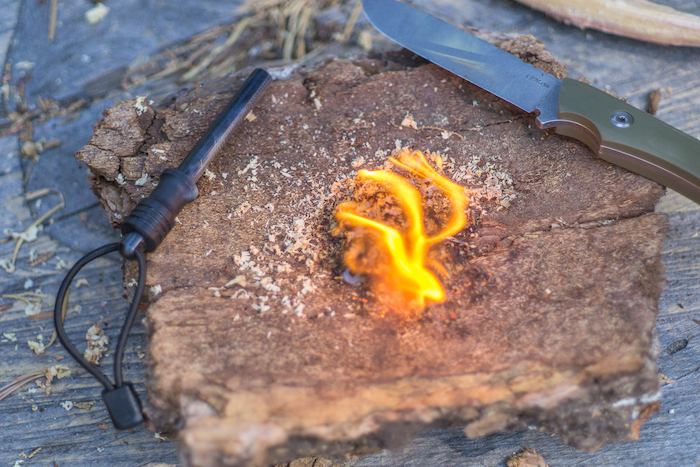
Here’s a few ways to get that fire going using your folding or fixed blade knife, ferro rod, and perhaps a lighter or match:
- Fatwood chips- Using your knife shave off some chips of the fatwood, bundle them into a small pile, strike your ferro rod into the pile of fatwood chips.
- Fatwood feather sticks- Take one of your fatwood sticks and using your knife carve small curls starting from about 3-4” above the bottom, then ignite the feathered section using a ferro rod or lighter.
- Fatwood shavings- Using the back of your knife’s blade (if it has sharp edges) or the base of the cutting edge, keeping your blade at a 75-90deg angle, start shaving the fatwood till you have created a small pile, then strike the base of the shaving pile with using your ferro rod to ignite, or use a lighter/match.
- Once the fatwood has been ignited start adding small sticks/kindling to build up your campfire, finally adding fire wood to get your fire ready to keep you warm.
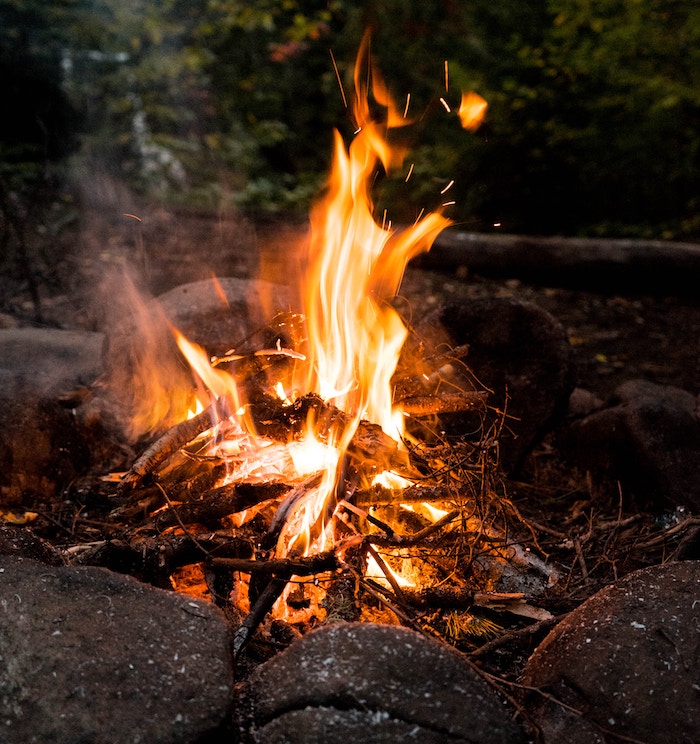
Thank you for taking the time reading this article on one of the best natural campfire starting sources. I wish you luck on your search for fatwood!
And lastly I’d like to mention…. if you’re camping in an area with a fire ring it’s a nice gesture leaving a couple fatwood sticks for the next camper.

